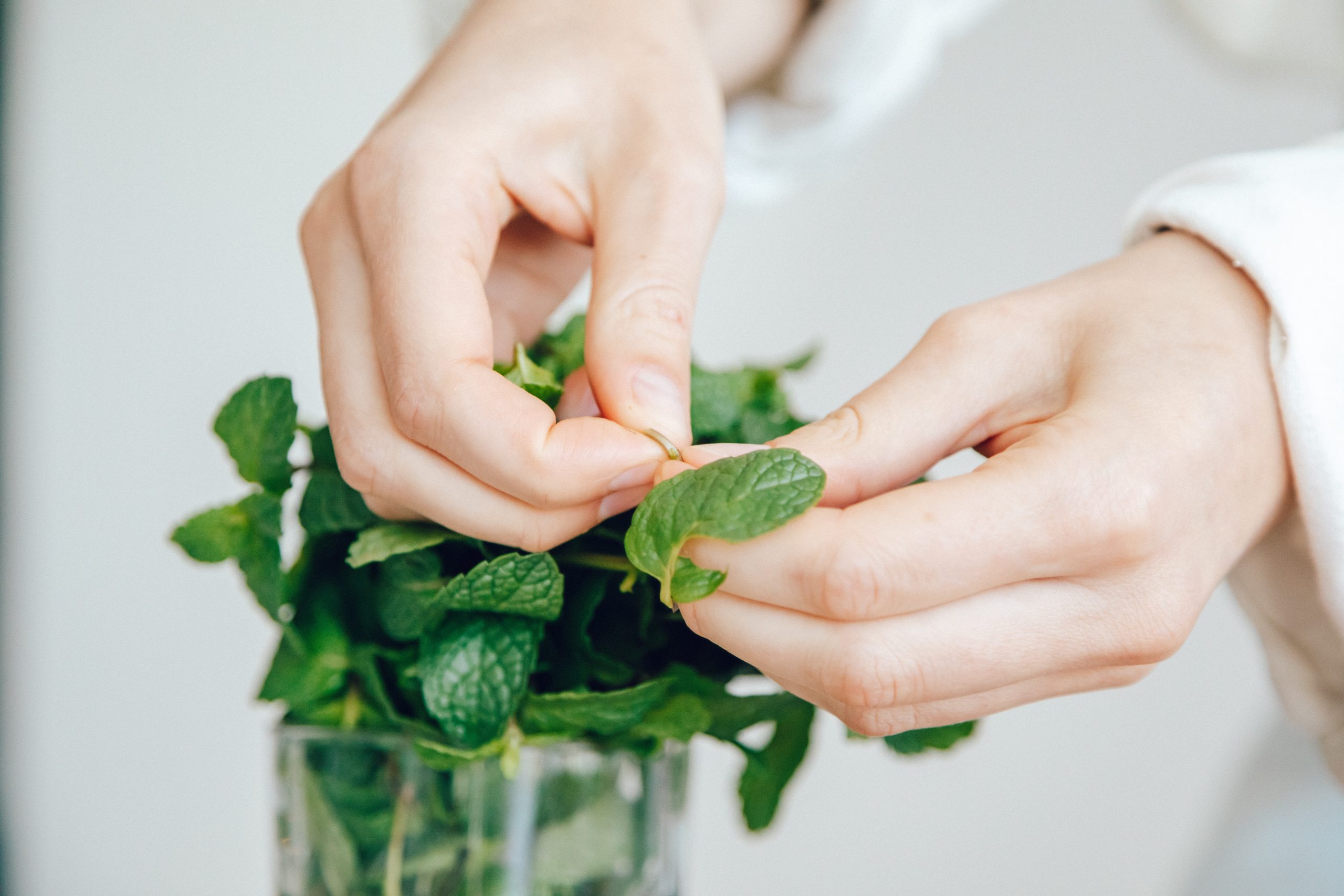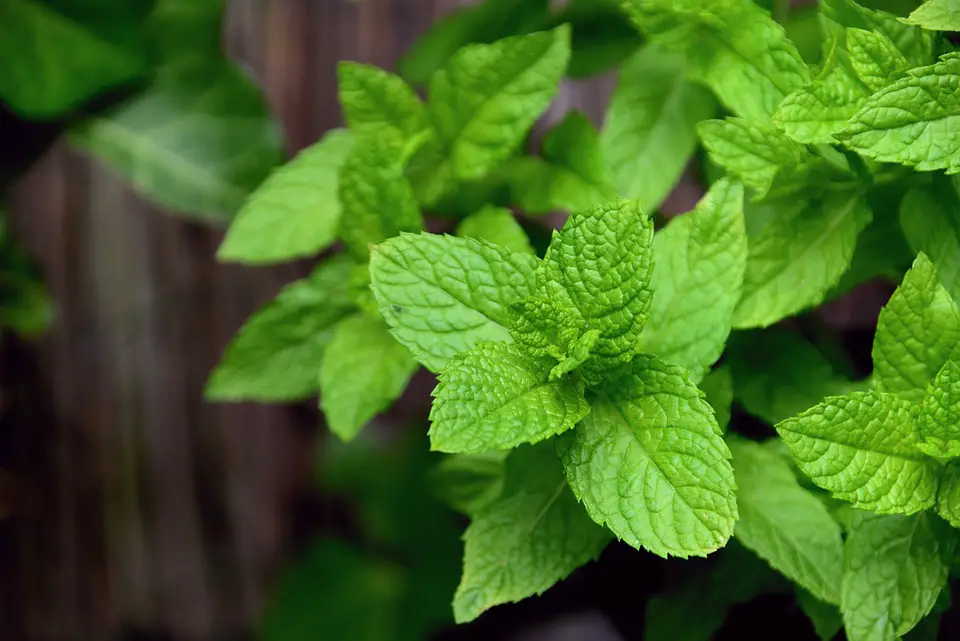An excellent crop to plant in a backyard garden is mint. You will always have access to this fresh herb if you keep it enclosed in its planter for 4-6 months out of the year.
Additionally, you may use mint, a versatile item, all year long by freezing it whole or on ice.
Try producing your homemade peppermint extract if you have too much mint and no freezer space. It is a delectable choice for preserving that is shelf-stable. Mint leaves can be frozen in a plastic bag, a freezer storage bag, or a small Mason jar. These are easy to use and preserve the mint leaves for up to three weeks.

What is Mint?
The fragrant herb known as mint is produced by various mint plants (Mentha). Minthe is a mythological nymph with that name, and mint comes from the eastern Mediterranean (Minto). The underworld deity Pluto had an affair with her, and jealous Persephone changed her into a lowly mint plant. Mint is easy to grow because it is readily available and a favorite among gardeners. It is a gluten-free herb suitable for vegan, vegetarian, and paleo diets.
The flavor of mint is pleasant, giving the tongue a temporary cooling sensation. Fresh leaves of mint have the strongest flavor and scent. Peppermint has a more potent flavor and has more menthol to it.
Three Ways to Freeze Mint Leaves
1. Whole Mint Leaves
To freeze individual mint leaves, follow these instructions:
Remove the leaves from your mint stalks and give them a thorough cleaning. You don’t want your mint leaves to freeze with the dirt. To ensure that you only freeze the best leaves, toss any damaged or eaten ones.
Dry: After cleaning, thoroughly dry the items.
Flash Freeze: Spread your mint leaves on a baking tray lined with greaseproof paper. Give the tray a few hours in the freezer so the mint leaves can solidify.
Add to the container: The leaves should be gently removed because they will be quite fragile when you remove the tray from the freezer.
The container with the leaves in it. Use a tiny Tupperware container that is big enough to hold the leaves but small enough not to take up too much room. We advise against using a bag because it can get crushed.
Final Freeze: Place the jar in the freezer, then take out as many leaves as you require when you require them.
2. Ice Cubes
This is how we like to freeze mints. Mint ice cubes can be used in a variety of ways.
They can be used in soups the same way that mint would ordinarily. However, they can also be placed in a glass, then filled with water to make an instantly hydrating beverage on a hot day. How to freeze mints in ice cube trays is provided below:
Clean: The leaves must first be separated from the stems and thoroughly washed. After washing, drying is the next crucial step. If you have a salad spinner, you can use that to get rid of any extra moisture.
Take your ice cube tray, and place 6 to 8 leaves into each space to fill the cubes. The leaves might need a little pushing down, but don’t push too hard, or you’ll hurt them.
Cover: Make sure all the leaves are submerged by filling each ice cube hole with melted butter, oil, or water. After wrapping the tray, freeze it for several hours.
Freeze: To keep the cubes in the freezer for longer, remove them from the ice cube tray once they are completely frozen solid and place them in a freezer bag.
3. In Vacuum Sealer
Mint leaves should be cleaned, then dried with a paper towel or clean dishcloth. Either individual leaves or the entire mint sprig can be sealed.
Prepare: Utilizing the vacuum sealer ingredients, create a bag. Ensure that the bag is big enough to retain the leaves or sprigs.
Seal: Put the mint in the bag and use the vacuum sealer to close the open end, as directed by the manufacturer.
For up to 6 months, freeze the vacuum-sealed bag.
What is the Shelf Life of Fresh Mint?
Fresh herbs can quickly turn brown and wilt if exposed to too much water and oxygen, especially if stored in a supermarket bag or crisper drawer. Due to its high moisture content, mint wilts quickly when the water evaporates from the stems and leaves cells. Fresh herbs can be kept for two to three weeks in the refrigerator and months in the freezer if properly preserved. On the other hand, dried herbs can keep for years in the cupboard.
We advise storing your mint in the freezer for six months to prevent the flavor from deteriorating. After this period, there is a possibility that the mint flavor will deteriorate to the point that you won’t notice much mint flavor.
Remember to label your mint with the expiration date, as we usually advise.
What is the Correct Method of Storing Mint Leaves?
The shelf life of the delicate herb can be increased by storing fresh mint in various methods. No matter the technique you choose, it’s advisable to rinse your mint with cold water first. Think about the following storage options:
Refrigerate: For storage, place fragile herbs upright in a glass jar of water (much like a bouquet) and loosely cover them with a plastic bag. To maintain moisture and lengthen the freshness of mint leaves, you can also wrap them in a few layers of wet paper towels and store them in a zip-top bag in the refrigerator.
If you intend to store mint for a long time, you can use the ice cube method to freeze mint leaves to maintain flavor. Place the mint leaves in an ice cube tray after removing the stems. Place the tray in the freezer after adding water to the tray. As soon as the cubes are frozen, you can use them by thawing them or adding frozen mint ice cubes to the meal or beverage you’re making, depending on your needs. After a few hours, you can put the frozen leaves in a freezer bag. Alternatively, you can freeze quantities of fresh leaves on a baking sheet or cookie sheet in a single layer. Up to six months can pass after the mint is frozen.
Dry: One method for keeping mint for a long time is to dry it. If you’re going to dry your mint in the oven, separate the leaves from the stems, and spread them out on a baking sheet after completely drying them to remove any excess moisture. Check the mint on the sheet approximately every fifteen minutes while it is baking at 180 degrees Fahrenheit; you want to be dried, crispy leaves. Depending on the amount of moisture in the leaves, it may take two to four hours. A dehydrator can also be used, and it might come with instructions specifically for drying herbs. Alternatively, you can air dry a bunch of mint by dangling it from a paper bag upside down in a well-ventilated area until the leaves are completely dry. The dried mint can then be processed into a fine powder in a food processor before being stored in an airtight container away from excessive heat or light.
How can Mint be Defrosted?
The mint leaves don’t need to be defrosted because they are so thin; they will thaw out fairly immediately when heated in a dish.
Additionally, there’s a chance that you’ll want to use the mint to flavor beverages, in which case you may add it right away without defrosting to simultaneously flavor and cool your beverage.
The leaves can be easily defrosted before use. Make sure to begin defrosting two to three hours beforehand.
Defrost Each Leaf Individually
The frozen leaves should be taken from the freezer bag and placed on paper. While it is defrosting, this will aid in absorbing any moisture.
Let the mint defrost at room temperature for two to three hours.
Remove any extra water from the surface with a paper towel.
Thaw Ice Cubes
Mint cubes should be removed from the freezer and placed in a colander with fine mesh. The filter should be put in the sink.
Please turn on the cold water in your faucet and run it over the ice cubes.
Run the water until the ice and mint can be separated.
With a paper towel, dry.
It’s important to remember that once the mint has thawed, it cannot be frozen.
How to Recognize Bad Mint Leaves?
Fresh mint leaves provide your food with a calming effect, but they must be preserved carefully to keep them fresh. They will spoil if improper storage practices are used. Mint leaves undergo some physical changes that affect their texture; always look for these signs before using them in your food because spoiled mint leaves are unhealthy to eat.
Check for Brown Spots: Before purchasing mint leaves, look for the presence of brown spots. If you find any, do not purchase them, as this indicates that mold has attacked the plant.
Smell the mint leaves before purchasing them because they have a pleasant aroma when they are fresh. If the mint leaves have a bad odor, they have spoiled.
Soft Texture: Mint leaves have a perky texture, and their soft appearance indicate they are beginning to spoil. Fresh mint leaves have a perky texture and appearance.
What Consequences can Mint Leaves Cause?
Most people can safely consume Mint leaves and oil or apply them topically. Although rare, mint allergies can trigger asthma attacks in those exposed to them.
On rare occasions, consuming fresh mint leaves or mint oil can have negative effects. When taken in large doses, the menthol in mint can result in heartburn, nausea, pain in the abdomen, and dry mouth. If you have gastroesophageal reflux disease, you should avoid peppermint. Also, avoid them if you have kidney stones.
Peppermint may interfere with the effects of some medications or weaken their impact. According to some studies, the herb may lower blood sugar and blood pressure; people taking medication for diabetes or blood pressure problems shouldn’t use it.
It is not well known whether peppermint oil or tea is safe to use while expecting or nursing a baby. Pregnant women should therefore consult their doctor before finishing the herbal beverage.
Using peppermint oil on infants or young children is not advised because it could create respiratory issues.
Since the beginning of time, the alluring perfume has also Mint is a common kitchen herb in many parts of the world due to its advantages to human health, including treatment against indigestion, motion sickness, sore throat, fever, and other illnesses. Numerous studies have tried to separate and then identify components, including flavonoids, phenolic acids, terpenoids, and other volatile substances from different preparations of mint. These ingredients are widely known for their nutritional and medicinal benefits, and various varieties of mint contain them.
Conclusion
After you have cleaned the mint leaves, you will need to store them. You can freeze whole mint leaves or pureed mint leaves. If you are freezing whole leaves, it is recommended that you cover them with wax paper. This will prevent moisture from getting into the bag.
If you are freezing pureed mint leaves, putting them in ice cube trays is a good idea. The ice cubes will preserve the fresh taste of the mint for many months. You can add these to soups, curries, stews, and other recipes.
